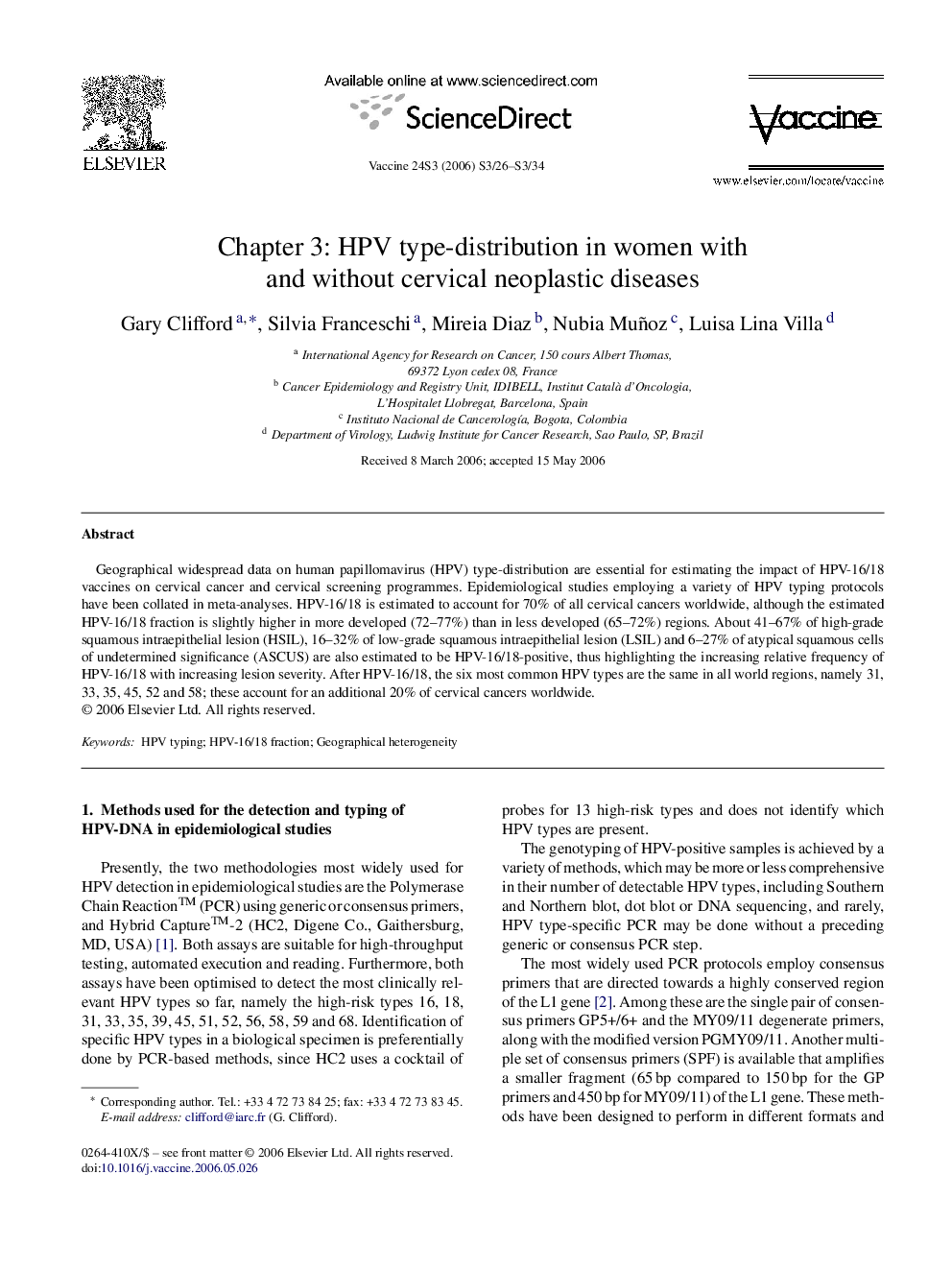| Article ID | Journal | Published Year | Pages | File Type |
|---|---|---|---|---|
| 2410704 | Vaccine | 2006 | 9 Pages |
Geographical widespread data on human papillomavirus (HPV) type-distribution are essential for estimating the impact of HPV-16/18 vaccines on cervical cancer and cervical screening programmes. Epidemiological studies employing a variety of HPV typing protocols have been collated in meta-analyses. HPV-16/18 is estimated to account for 70% of all cervical cancers worldwide, although the estimated HPV-16/18 fraction is slightly higher in more developed (72–77%) than in less developed (65–72%) regions. About 41–67% of high-grade squamous intraepithelial lesion (HSIL), 16–32% of low-grade squamous intraepithelial lesion (LSIL) and 6–27% of atypical squamous cells of undetermined significance (ASCUS) are also estimated to be HPV-16/18-positive, thus highlighting the increasing relative frequency of HPV-16/18 with increasing lesion severity. After HPV-16/18, the six most common HPV types are the same in all world regions, namely 31, 33, 35, 45, 52 and 58; these account for an additional 20% of cervical cancers worldwide.
